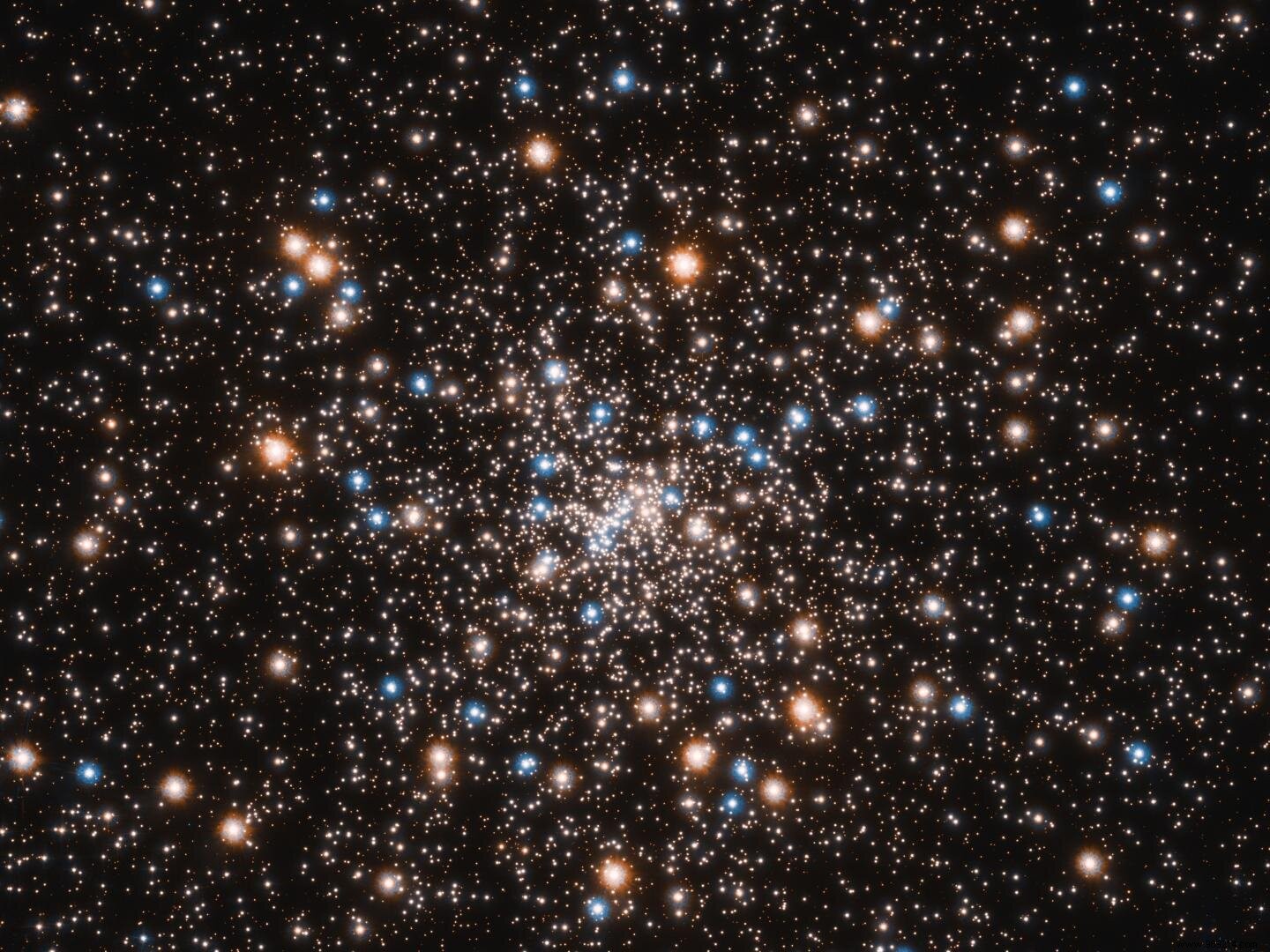When examining the core of a globular cluster "near" Earth, astronomers expected to stumble upon an elusive object:an intermediate-mass black hole . Eventually, they came across a concentration of small, stellar-mass black holes. Details of the study are published in the journal Astronomy &Astrophysics.
The globular clusters are concentrations of hundreds of thousands of stars confined in a sphere whose size varies from about twenty to a few hundred light-years. All of its stars formed at the same time, from the same cloud of gas. There are currently about 150 such clusters in the Milky Way , but there could be more. Finally, these objects are often considered "fossils" since most formed very early in the Universe.
Found about 7,800 light-years away of Earth, NGC 6397 is one of these clusters. It is also one of the closest to Earth. Recently, Eduardo Vitral and Gary A. Mamon, from the Institut d'Astrophysique de Paris, took an interest in it to probe the possible presence of a very rare object inside:a intermediate-mass black hole .
As their name suggests, these "middleweights" fall between stellar mass black holes (up to a hundred solar masses) and supermassive ones (several million or even billions of stellar masses), found at the center of galaxies.
According to the authors, these "intermediate" objects could be unearthed in the gravitational core of globular clusters, around which the stars rally. The properties of NGC 6397 also suggested that there might be one of these "middleweights" at its center.

To probe the possible presence of such an object, the researchers relied on images of the cluster captured by Hubble over several years. They also combined this data with data collected by ESA's Gaia satellite, which examines the positions, distances and movements of stars. Thanks to all this information, the researchers were able to estimate the mass distribution inside this cluster .
"We found very strong evidence of an invisible mass in the dense core of the globular cluster “, confirmed astronomer Eduardo Vitral. "On the other hand, we were surprised to find that this additional mass was not contained in a very precise point, but distributed over a larger area (a few percentages of the size of the cluster) “.
We know that "dead" stars, such as white dwarfs, neutron stars, and black holes, are denser than main sequence stars. As a result, they move inward from these clusters, sending the less dense stars outward.
Here, the researchers' calculations showed that this invisible mass distributed in the center of the cluster was not a black hole of intermediate mass, nor a collection of white dwarfs or neutron stars, but a concentration of stellar-mass black holes.
"Our study is the first to provide both the mass and extent of what appears to be a collection of mostly black holes at the center of a cluster collapsed globular “, emphasizes Eduardo Vitral.
This work will be useful for the future since we now know that several stellar-mass black holes can end up confined to the center of globular clusters. Based on this principle, astronomers will be able to refine their research by excluding clusters that behave in the same way.
We could also imagine that all these little black holes could wrap around each other to eventually merge . As a result, they could therefore give rise to black holes of intermediate mass. Meanwhile, the processes leading to these mergers could also generate gravitational waves that can be picked up by our instruments.